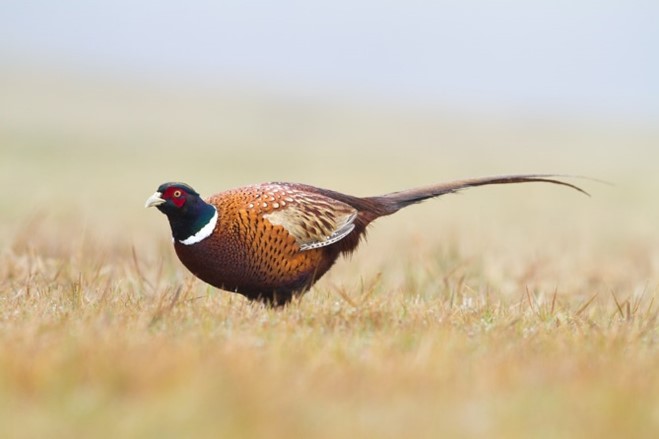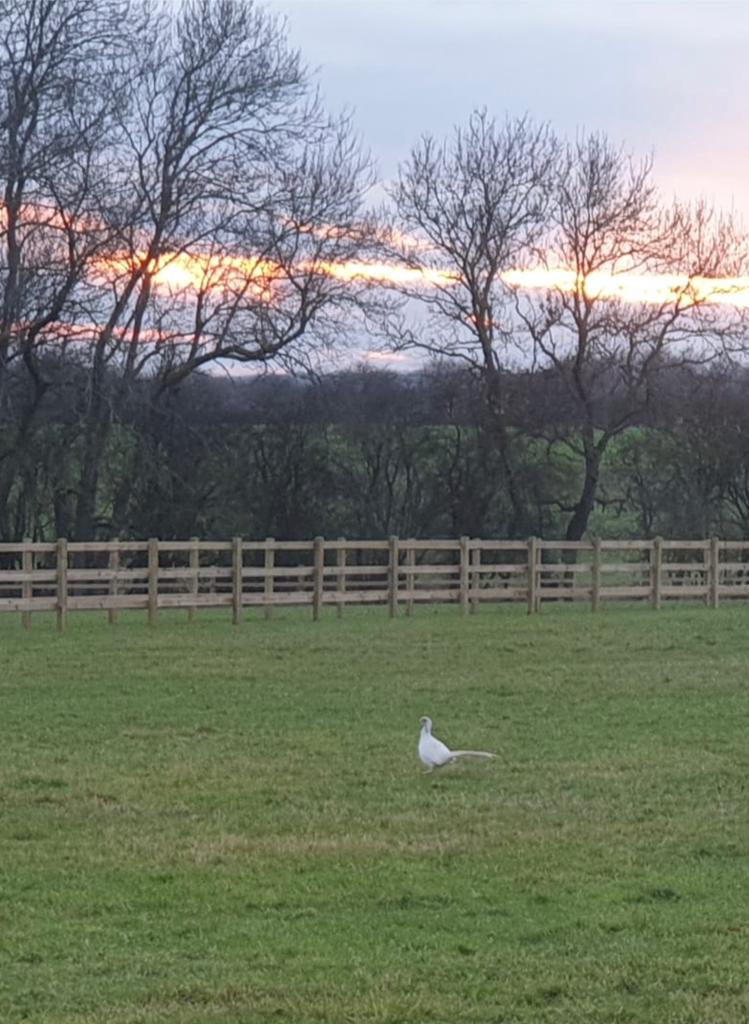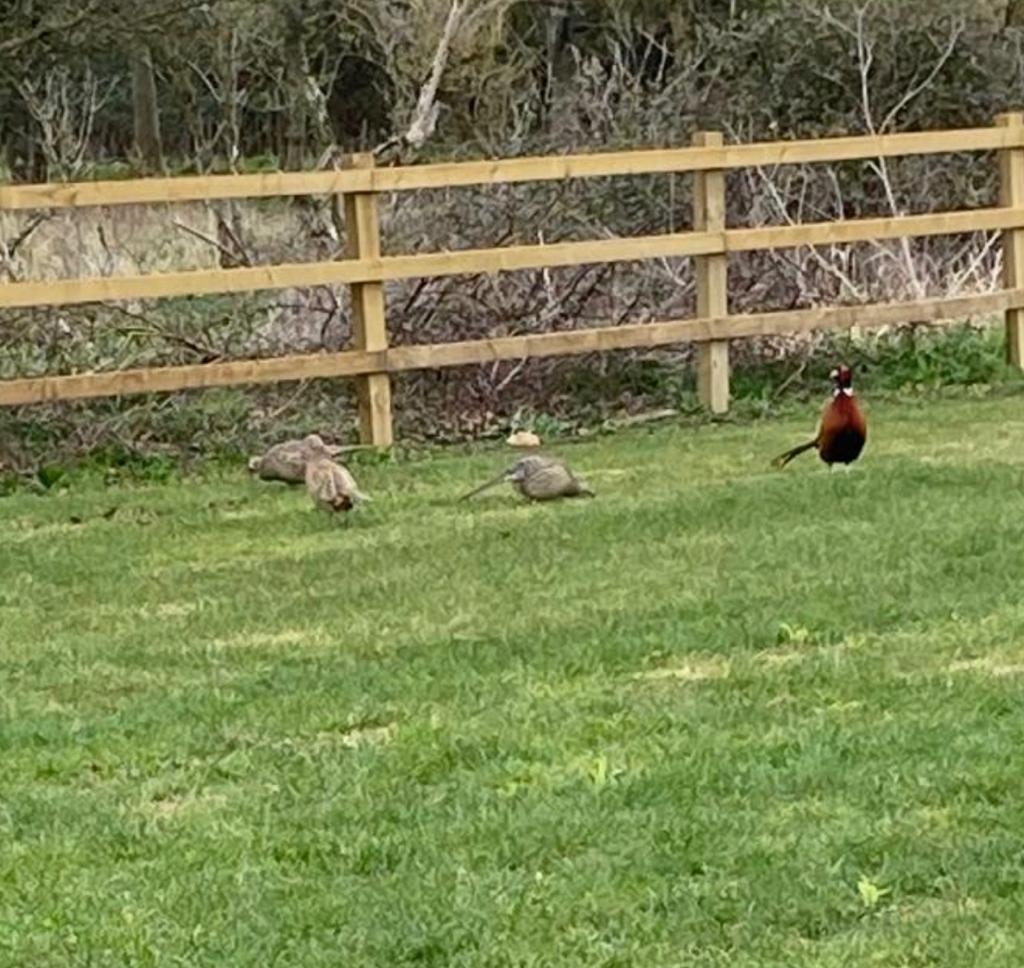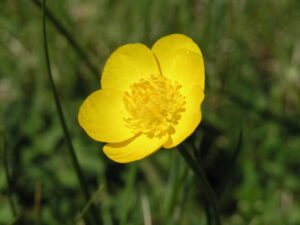The pheasant is not native to Britain but has a long history of residence here. There is some debate over the success of various possible introductions dating back to the Romans but is generally agreed, that pheasants were common by the 15th century.


The pheasant, often thought to be a bird of woodlands, is really a species of woodland edge and agricultural land. In areas where woodlands are not common, shrubby wetlands provide suitable habitat.
Despite its introduced status , the conservation of the pheasant is important because of its long history of naturalisation and importance as a symbol of our traditional countryside.
Pheasants are omnivores with diet varying by season. They are known to eat a variety of bird seeds, grains, berries, and shoots. They will eat oats, buckwheat, barley, apples, pears, peas, and green sprouts. Pheasants will also consume a wide range of invertebrates, such as leatherjackets, ant eggs, wireworms, caterpillars, grasshoppers, and other insects, however occasionally small vertebrates will be taken, such as lizards, field voles and small birds.
Fun facts: Pheasants eat gravel to help them in the digestion of their food. Rooster’s screech, Hen’s peep.
Pheasants need dense habitat that breaks the wind and stops the snow, along with nearby food. They require 30 to 40 percent more food in winter than in early autumn, which means the birds sometimes must forage far from safe cover.
Pheasants prefer to walk or run on the ground and can do this at speeds of up to 10 miles per hour. However when they are startled, they will burst upwards from their cover, flying away at speeds of up to 50 miles per hour.
The lifespan of a pheasant is about 1-3 years in the wild and up to 18 years in captivity.
The adult male pheasant is 60-90 cm in length with a long brown streaked black tail, accounting for almost 50 cm of the total length. The female (hen) is much less showy, with a duller mottled brown plumage all over and measuring 50-63 cm long including a tail of around 20 cm.
Here at Rockingham Forest Park, we have the perfect environment for the pheasant to wander our ancient woodland, as seen in this footage.
We were also very fortunate this year as we had a white pheasant, as we respect our wildlife on park, we were not able to determine if the one we have is an albino or leucistic variety. The only way to tell them apart is their eyes, albino have pink eyes and leucistic have blackeyes.
Written by Faye McGregor









